European route E39
European route E39 is the designation of a 1,330-kilometre-long (830 mi) north–south road in Norway and Denmark, running from Klett just south of Trondheim to Aalborg, via Bergen, Stavanger and Kristiansand. In total there are nine ferries, the highest number of ferries for a single road in Europe.
| |
|---|---|

| |
| Route information | |
| Length | 1,330 km (830 mi) |
| Major junctions | |
| North end | Klett, Norway |
| South end | Aalborg, Denmark |
| Location | |
| Countries | |
| Highway system | |
| International E-road network | |
In Trondheim, there are connections to E6 and E14. In Ålesund, to E136, in Bergen to E16, in Haugesund, to E134, in Kristiansand to E18, and in Aalborg to E45.
Norwegian part
.svg.png.webp)
In Norway, E39 is part of Norwegian national road system, and is as such developed and maintained by the public roads administration.[1] E39 is mostly a two-lane undivided road, only relatively short sections near Stavanger, Trondheim and Bergen are motorways or semi-motorways.
Trøndelag county
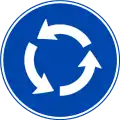
 E6
E6  Fv707 Klett junction
Fv707 Klett junction Udduvoll bru
Udduvoll bru
 Semi-motorway Øysand-Thamshavn/Orkanger (22 km)
Semi-motorway Øysand-Thamshavn/Orkanger (22 km)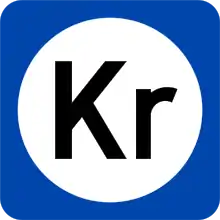 2 Toll stations at Øysand/Buvika and Thamshavn
2 Toll stations at Øysand/Buvika and Thamshavn

 Rv65 Orkanger
Rv65 Orkanger
 ferry from Halsa to Kanestraum in Tingvoll (20 minutes, fee)
ferry from Halsa to Kanestraum in Tingvoll (20 minutes, fee)
Møre og Romsdal county
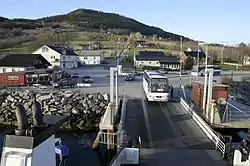
 Bergsøysund Bridge 931 m
Bergsøysund Bridge 931 m
 Gjemnessund Bridge 1257 m
Gjemnessund Bridge 1257 m
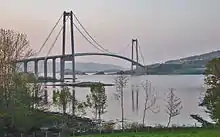
 Molde Airport, Årø
Molde Airport, Årø
 Rv64→ Fannefjordstunnelen direction Åndalsnes
Rv64→ Fannefjordstunnelen direction Åndalsnes ferry from Molde to Vestnes (Furnes dock, 35 minutes)
ferry from Molde to Vestnes (Furnes dock, 35 minutes)
 E136 at Skorgenes, jointly with E39 until Spjelkavika
E136 at Skorgenes, jointly with E39 until Spjelkavika
 Fv650 Sjøholt → Linge ferry dock
Fv650 Sjøholt → Linge ferry dock
 E136 at Spjelkavika, jointly with E39 from Skorgenes at Tresfjord
E136 at Spjelkavika, jointly with E39 from Skorgenes at Tresfjord Vegsundbrua
Vegsundbrua

 ferry from Solavågen to Festøya in Ørsta (20 minutes, fee)
ferry from Solavågen to Festøya in Ørsta (20 minutes, fee)

 Fv655 Ørsta
Fv655 Ørsta

 Fv653 Furene →
Fv653 Furene →  Eiksund tunnel
Eiksund tunnel- New route without ferry Volda-Fyrde-Grodås-Nordfjordeid
 Kviven Tunnel, 6,490 metres (21,290 ft)
Kviven Tunnel, 6,490 metres (21,290 ft)
Vestland county
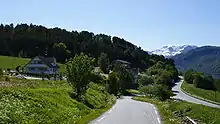
 Rv15 at Leivdøla bridge, jointly with E39 until Nordfjordeid
Rv15 at Leivdøla bridge, jointly with E39 until Nordfjordeid
 Ferry from Lote to Anda (10 min, 1-2 departures per hour, fee)
Ferry from Lote to Anda (10 min, 1-2 departures per hour, fee)

 Rv60 at Byrkjelo
Rv60 at Byrkjelo
 Rv5 jointly with E39 from Skei to Førde
Rv5 jointly with E39 from Skei to Førde Rv13 at Moskog
Rv13 at Moskog
 Rv5 Førde
Rv5 Førde Førde airport
Førde airport Rv57 at Espeland
Rv57 at Espeland
 Rv55 at Vadheim
Rv55 at Vadheim Bogstunnelen (3,482 m)
Bogstunnelen (3,482 m)- Lavik
 ferry from Lavik to Ytre Oppedal (20 min, 1-2 departures per hour, fee)
ferry from Lavik to Ytre Oppedal (20 min, 1-2 departures per hour, fee)
- Ytre Oppedal
 Skrikebergtunnelen (1500 m)
Skrikebergtunnelen (1500 m) Jernfjelltunnelen (2 391 m)
Jernfjelltunnelen (2 391 m)
 Matreberg Tunnel (1352 m)
Matreberg Tunnel (1352 m) Masfjord Tunnel (4110 m)
Masfjord Tunnel (4110 m)
 Eikefet Tunnel (4910 m)
Eikefet Tunnel (4910 m) Mundalsberg Tunnel (1085 m)
Mundalsberg Tunnel (1085 m) Rv57 at Knarvik
Rv57 at Knarvik Hagelsund Bridge (623 m)
Hagelsund Bridge (623 m)
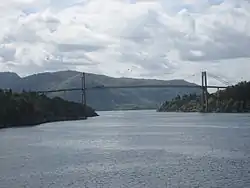
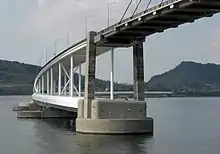
 E16 at Nyborg
E16 at Nyborg Motorway Vågsbotn – Eidsvåg (5 km)
Motorway Vågsbotn – Eidsvåg (5 km) Fløyfjellstunnelen (two parallel tunnels, 3195 and 3825 m)
Fløyfjellstunnelen (two parallel tunnels, 3195 and 3825 m)- Bergen
 3 Toll stations at Sandviken, Nygårdsbroen and Fjøsangerveien
3 Toll stations at Sandviken, Nygårdsbroen and Fjøsangerveien Bergen Airport, Flesland
Bergen Airport, Flesland
 Ferry from Halhjem to Sandvikvåg (40 min, 2 departures per hour, fee)
Ferry from Halhjem to Sandvikvåg (40 min, 2 departures per hour, fee)
 Rv49 at Jektevik
Rv49 at Jektevik Stordabrua/Stord Bridge (1076 m)
Stordabrua/Stord Bridge (1076 m) Bømlafjordtunnelen/Bømlafjord Tunnel (7888 m, 262 m below s.l.)
Bømlafjordtunnelen/Bømlafjord Tunnel (7888 m, 262 m below s.l.)
Rogaland county
 E134 At Aksdal
E134 At Aksdal
 Ferry from Arsvågen to Mortavika
Ferry from Arsvågen to Mortavika
 Mastrafjordtunnelen (4424 m)
Mastrafjordtunnelen (4424 m) Byfjordtunnelen (5875 m)
Byfjordtunnelen (5875 m)
 2 Toll stations at Randabergveien and Forus
2 Toll stations at Randabergveien and Forus Motorway Schancheholen–Sandved (12 km)
Motorway Schancheholen–Sandved (12 km) Stavanger Airport, Sola
Stavanger Airport, Sola
Agder County

 Fedafjorden Bridge
Fedafjorden Bridge Vatlandtunnelen (3184 m)
Vatlandtunnelen (3184 m)
 Toll Handeland in Lyngdal
Toll Handeland in Lyngdal
 Kirkeheitunnelen (835 m)
Kirkeheitunnelen (835 m)
Domestic ferries
The E39 ferries are operated by Fjord1 except the Volda-Folkestad ferry, which is operated by Norled.
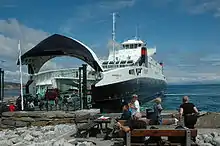
Domestic car ferries on the E39 are regarded as an integral part of national highways. Ferries operate according to a published timetable and standard prices for vehicles and passengers. The E39 includes the following ferry routes from North to South (approximate crossing time in minutes):[2][3]
- Halsa–Kanestraum 20 min.
- Molde–Vestnes 35 min.
- Solevåg–Festøya 20 min.
- Volda–Folkestad 10 min.
- Anda–Lote 10 min.
- Lavik–Oppedal 20 min.
- Halhjem–Sandvikvåg 45 min.
- Arsvågen–Mortavika 25 min.
The Norwegian government plans to replace all the ferries in Norway with bridges and tunnels.[4] This involves some of the longest proposed bridge spans.
History
In 1786, a royal decision was made to establish a postal route between Bergen and Trondheim. From the establishment of mail in Norway in 1647 until then, all mail between those cities went over to Oslo. To begin with, the route was for large parts usable for walking and horse riding only, but in the following decades it was rebuilt to allow horse carriages. Several parts required boat. The route was Bergen–Åsane–Hordvik–(boat over Salhusfjorden)–Isdal–Hundvin–Gulen–Rutledal–(boat over Sognefjorden)–Leirvik (Hyllestad)–Flekke–Dale–Bygstad–Førde–Jølster–Gloppen-(boat over Nordfjord)–Faleide (Stryn)–Hornindal–Hellesylt–Stranda–(boat along Storfjorden)–Sjøholt–Vestnes-(boat over Romsdalsfjorden)–Molde–Angvik–(boat over Tingvollfjorden)–Tingvoll–(boat over Halsafjord)–Stangvik–Skei–Rindal–Orkanger–Trondheim. The 1786 decision also included a mail route between Stavanger and Bergen. In 1858, mail was rerouted to newly established steam ships Bergen–Vadheim, and the mail route changed to Vadheim–Sande–Førde, in parts precisely along today's route.[5]
Since 1990, a number of long bridges and tunnels have replaced four of the ferries. The bridges and tunnels are:
- Nordhordland Bridge (1994)
- Gjemnessund Bridge and Bergsøysund Bridge (1992)
- Stord Bridge and Bømlafjord Tunnel (2000)
- Kviven Tunnel and further tunnels (2012)
Other large road projects include:
- Klett–Orkanger (2005)
- Orkanger–Høgkjølen (2015)
- Lote Tunnel (1966)
- Bogs Tunnel (2004) and the adjacent Norevik Tunnel (2012)
- Masfjord Tunnel and adjacent tunnels (1986-1995)
- Eikefet Tunnel (1980)
- Fløyfjell Tunnel (1989)
- Mastrafjord Tunnel (1982)
The route Trondheim–Ålesund–Bergen–Stavanger–Kristiansand was named E39 in 2000. Kristiansund–Stavanger was earlier riksveg 1 (national highway 1, "coastal through-road") from 1992 and riksveg 14 before 1992. Stavanger–Kristiansand was part of E18, and Trondheim – Kristiansund was riksveg 65 and riksveg 71.
Future
- A 15-kilometre-long (9.3 mi) motorway south of Bergen is under construction and expected to be finished in 2022.
- The world's deepest and longest underwater road tunnel, the 27-kilometre-long (17 mi) and 392-metre-deep (1,286 ft) Rogfast, was started (first blasting) in 2018 and is expected to be opened in 2028-29.
- The entire route from Stavanger to Kristiansand is planned to be rebuilt into motorway or semi-motorway before 2030.
- There are plans to replace every ferry link with a fixed connection, but each presents a costly technical challenge as the fjords are wide and very deep, so the plans are controversial and uncertain (except Rogfast).[6]
Norway–Denmark ferry
International car ferry operated by Color Line:[7] and Fjord Line (Seasonal).[8]
- Kristiansand - Hirtshals 3 hours 15 minutes
Danish part
_ubt.JPG.webp)
From Norway E39 goes with ferry from Kristiansand to Hirtshals in north Denmark. Ferries are run by Colorline and Fjordline. In Denmark E39 is a motorway from the south of Hirtshals to the north of Aalborg. The exits are:
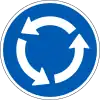 Aabyen
Aabyen 2 Hjørring N
2 Hjørring N 3 Hjørring C
3 Hjørring C 4 Hjørring S
4 Hjørring S 5 Vrå
5 Vrå 6 Brønderslev C
6 Brønderslev C 7 Brønderslev S
7 Brønderslev S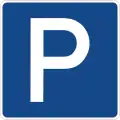 |
| Store Vildmose
Store Vildmose 8 Tylstrup
8 Tylstrup 9 Vestbjerg
9 Vestbjerg 10 Høvejen → Aalborg Airport
10 Høvejen → Aalborg Airport
 E45 s Aalborg, Århus
E45 s Aalborg, Århus
References
- National Public Roads Administration of Norway, website
- "Fjord1 website". Archived from the original on 19 February 2009. Retrieved 20 February 2009.
- Can Norway win the global race to build a 'floating tunnel'? CNN 29 January 2019
- 3D-animation the Sognefjord
- Historiske kart 22D 12; 23C 9; 28B 4; 28B 8; 29A 1; 29A 5: Hordaland / Sogn og Fjordane
- "The E39 Coastal Highway Route". Statens vegvesen. Retrieved 19 July 2020.
- Color Line
- Fjord Line
External links
| Wikimedia Commons has media related to E39. |
| Wikivoyage has a travel guide for European route E39. |

